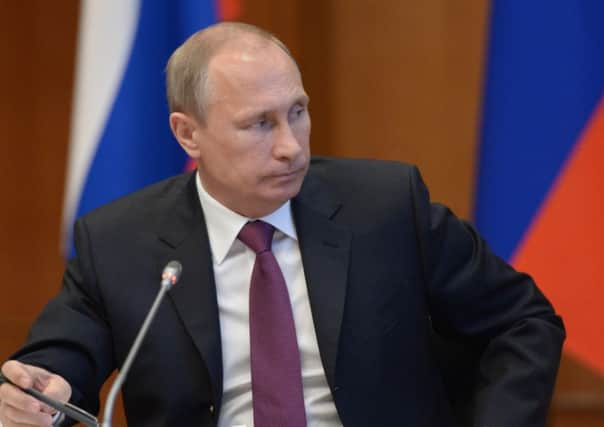Russia highlights new ‘threats’ in military update


The comments from Mikhail Popov, a Kremlin advisor and deputy head of its Security Council, came only a day after the Western alliance said it planned to form a rapid-reaction force to counter any threats to European security.
“The fact that the military infrastructure of Nato member states is getting closer to our borders, including via enlargement, will preserve its place as one of the external threats for the Russian Federation,” said Mr Popov.
Advertisement
Hide AdAdvertisement
Hide Ad“Nato’s planned action . . . is evidence of the desire of US and Nato leaders to continue their policy of aggravating tensions with Russia,” he continued.
“Russia is being deliberately painted as the enemy, and its political course is seen as new threat to Nato.”
He added that Russia would alter its 2010 military doctrine to focus more on overcoming the alliance and any missile defence system the alliance installs on its eastern frontier.
Even before the eruption of the Ukraine crisis last year, the Kremlin has been hostile to the positioning of any significant Nato forces and equipment on its border. Now the alliance’s apparent intention to form a rapid reaction force appears to have further riled Moscow.
The force, which is set to get approval at a Nato meeting in Wales this week, would consist of thousands of troops that could be deployed anywhere covered by the alliance within 48 hours.
Anders Fogh Rasmussen, Nato’s secretary general, claimed the force would operate in the parameters of a 1997 agreement with Russia that limits Nato’s permanent military presence in central and eastern Europe.
The proposal could go some way to quell the growing alarm in the Baltic states and Poland over the course of the war in Ukraine, and Russia’s apparent eagerness to deploy its armed forces to preserve its influence in neighbouring countries.
On the ground in Ukraine, rebels, apparently backed by regular Russian troops and tanks, continued their counter-offensive, pushing back government forces across a broad front in the east of the country.
Advertisement
Hide AdAdvertisement
Hide AdKiev said yesterday that 15 more of its soldiers had died in the fighting in the previous 24 hours, and its army had withdrawn from Luhansk airport.
Ukrainian troops were also digging in around the port town of Mariupol to thwart a rebel advance amid rumours that Moscow might be seeking to establish a land corridor to the Crimean peninsula it annexed earlier in the year.
As fighting continued, the UN High Commission for Refugees said that more than 500,000 Ukrainians have now been displaced by the war, and warned of a disaster if the conflict was not brought to an end. “If this crisis is not quickly stopped, it will have not only devastating humanitarian consequences, but it also has the potential to destabilise the whole region,” said the head of the agency Antonio Guterres.